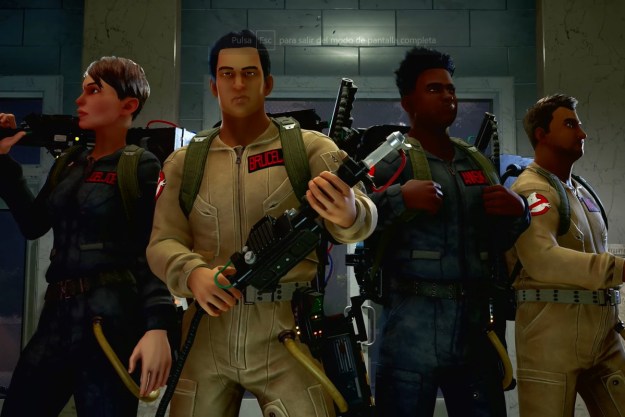Healing through a World of Warcraft Classic dungeon is a scary job. It takes deep concentration and awareness, but also heaps of on-the-fly problem solving and quick thinking. You never really know how much damage an ally will take, when that damage will hit, or even who it will hit if an enemy has flanked your group. But if you’re brave enough to wrap up a group’s wounds, you’ll have no trouble getting into one while dozens of DPS characters fight over the coveted opportunity.
If you’re willing to step up to the plate, we’re willing to guide you through which World of Warcraft Classic healer classes are right for you, how you can master their tricks and builds, and what to look out for in your first few dungeon runs. You’ll feel like a superhero when it all goes right.
Priest healer guide
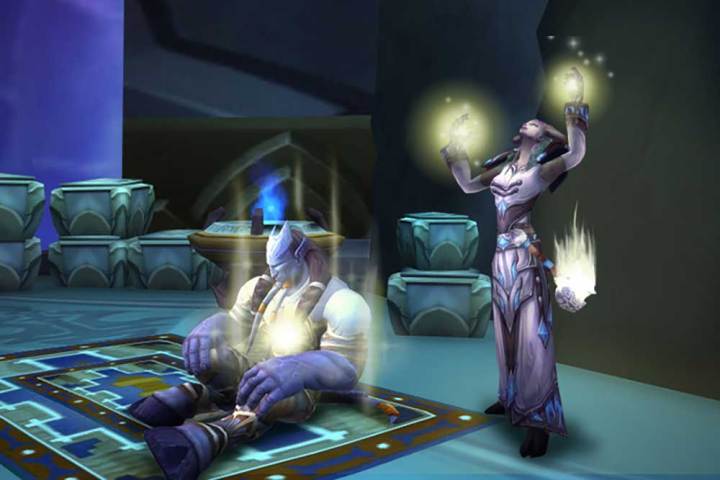
The more clearly defined healing class in World of Warcraft Classic, the Priest is a well-rounded healer will access to not only bountiful heals, but plentiful shield and buffs, too. They only have access to Cloth armor, so they’re prone to taking more damage if a mob escapes the tanks hold, and will have to fight other casters for gear drops. Downranking spells to deal with fluctuating needs and mana conservation efforts sounds difficult on paper, but the slow rate at which this practice is introduced shouldn’t deter newcomers.
Around the time of healing your first dungeon, you should have access to both Power Word: Shield and Power Word: Fortitude. You’ll want to keep Fortitude up on the tank especially for the extra HP.
Power Word: Shield grants immunity to a set amount of incoming damage and negates spell knock-back, so try to save this for if a mob peels from a bigger group – that way you’ll be able to keep the tank topped up while being attacked if Fade isn’t available. Use your highest-ranked Heal for with spike damage and lower-ranked versions for smaller, more manageable damage to save on mana. Renew will often be better in smaller pulls.
Preist talent spec and build
Considering we’re looking at the level 15-20 range for this guide, speccing into Holy for shouldn’t have a massive impact on solo leveling while making a noticeably increase to healing potential. Pick up both Healing Focus and Holy Specialization to make for occasionally bigger heals and less need to panic over stray enemies crippling your outgoing casts.
Shaman healer guide
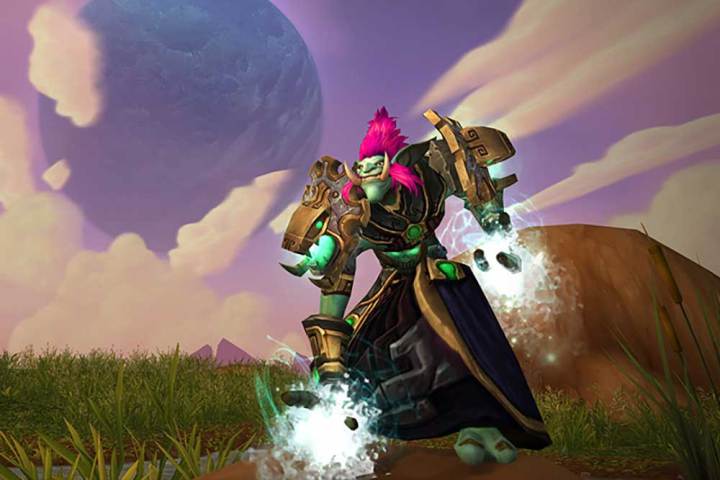
Having access to a shield makes the Shaman a bulkier healer than the Priest. Their totems offer helpful buffs, and their main healing spell – Healing Wave – becomes stronger with each subsequent cast against the same target. This makes the Shaman a little more mechanically heavy than other healers, requiring the player to think more about the changing effects of their spells in order to maximize their mana efficiency.
When you get around to healing your first dungeon, you should have access to a bunch of totems and weapon buffs. Ensuring you stock up on totem reagents regularly is a must. Lucky for you, Healing Wave is really the only heal spell you have access to at this point.
Your job with each pull will be to place Stoneskin Totem and Strength of the Earth Totem to reduce incoming damage and increase ally damage, heal with Healing Wave, and to use things like Flametongue-imbued weapons and Fire Nova Totem to deal damage while retaining enough mana to heal in a pinch.
Shamen talent spec and build
Just like their simple healing efforts, an effective level 15-20 Shaman build is easy enough to understand. Maxing out Improved Healing Wave and Tidal Focus in the Restoration tree will make your heals faster and consume less mana in the long-run. That means less time healing and far less worry about running your mana reserves dry in a pull.
Paladin healer guide

A visually odd choice of healer given their use of heavy armor and shields, the Paladin is a competent healer with the kind of survivability newcomers can get behind. They even have the least amount of dedicated healing spells to toss out. They’re more known for helpful buffs than their heals, but they get the job done and should be seen as a very beginner-friendly choice.
Around the time of your first dungeon, Holy Light and Purify will be the only true heal/support skills on your hotbar. You can have the three ranks of Holy Light on your bar to save mana in less damage-heavy situations, but it shouldn’t be necessary.
Just buff your party members will the relevant Blessing spell, heal incoming damage, and use Purify to scrub any disease or poison effects that might land.
Paladin talent spec and build
The whole point of the healer Paladin talent tree is to unlock Holy Shock. But it’s at the bottom of the Holy tree and not somewhere we’ll reach when in our first few dungeon runs. The focus eventually turns to improving party buffs, but we’ll make a start on the Holy tree to grab the increased Intellect from Divine Intellect and the healing spell knockback reduction from Spiritual Focus.
Druid healer guide

The Druid doesn’t look like much without the Treant form from WoW‘s first expansion, but they’re very powerful healers even without it. The druid pushes above other classes for party and raid heals at later levels, but can deal with the kinds of spike damage reserved for tanks just fine, too. The heal over time effects of many Druid heals make them less straight-forward than most other healers, however, so they’re not brilliant first-time choices.
Druids gain access to multiple ranks of Healing Touch, their main heal spell, and two regens – Regrowth and Rejuvenation by the time they’re ready to heal a dungeon. Regens can help keep the tank topped up while the Druid focuses on healing the team during trickier encounters.
The use of Entangling Roots and Nature’s Grasp can also help lock stray targets in place while the tank picks them up. By level 18, Faerie Fire can be used to significantly reduce the armor of mobs and bosses, potentially saving mana by speeding up a fight.
Druid talent spec and build
Speccing your Resto Druid at this level range has a slight bit of choice. You’ll want to max out Improved Call of the Wild for obvious reasons, but it’s the second row of the tree where you’ll need to stop and think. You want to max out both Improved Healing Touch and Nature’s Focus eventually, so weigh up your personal stance on reduced cast times or lower interrupts and go with whichever you think you’ll need first. Or spread your points across them, too.
How to heal at Ragefire Chasm

Found in the heart of Orgrimmar, Horde healers won’t have too much to worry about here. It’s designed as a very forgiving dungeon for players to gain vital party experience. Simple pathways and a lack of truly challenging mobs means healers won’t have to worry about healing the entire party. Even if the tank fails to grab every aggroed mob, there should only be one or two harassing any other player.
If anything, Ragefire Chasm can teach a healer to conserve mana by only healing when absolutely necessary. Players rarely need to be completely topped off at all times outside of boss situations, so letting the tank get to half HP before tossing out a heal is generally far better practice than using one with every single hit.
How to heal at Wailing Caverns
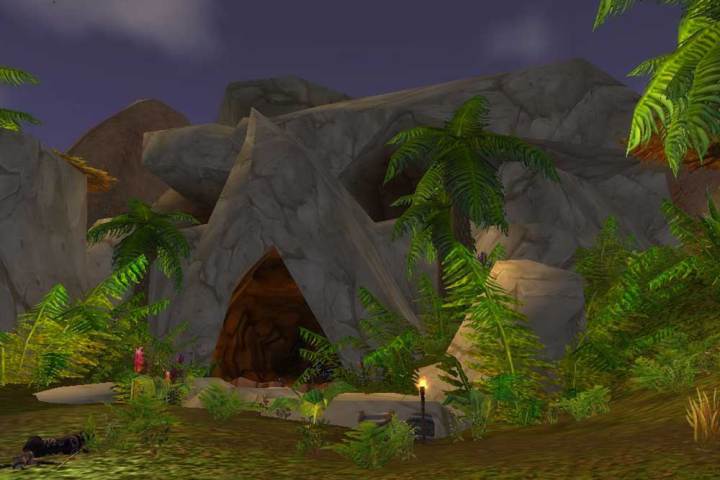
Situated in the Barrens, Wailing Caverns will introduce healers to slightly larger pulls with more attack variety. The angry druids here will inflict Sleep and various other debuffs, making it a lesson in crowd-control and the proper use of spells like Purify. Prepare for slightly more team damage as tanks struggle to aggro full packs quickly.
Just stay calm and remember to use ranked heals relevant to the kinds of damage going out in the moment. These pulls can last longer, and running out of mana before they’re over can create a sticky situation.
How to heal at Deadmines
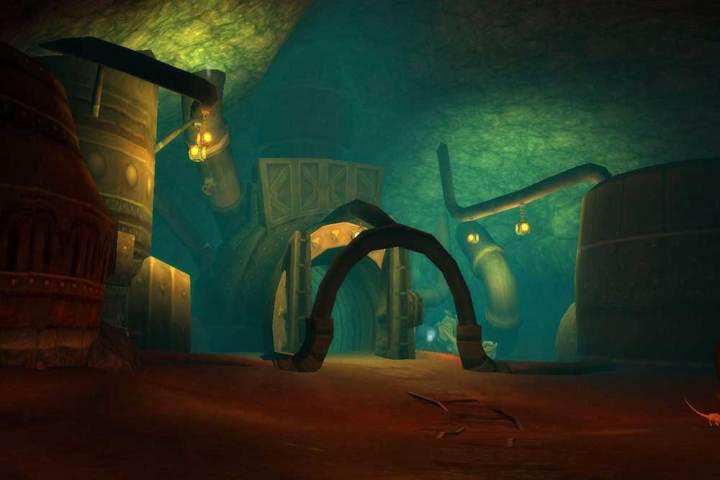
Any alliance healer taking on the Deadmines as their first official job is in for a rude awakening. Bosses won’t offer too much trouble here if the tank if is up to snuff, but plentiful patrols and flanking mobs can make this a real test of your confidence as a healer.
The Deadmines mixes elite mobs with regular joes, so be sure to take that into account with your damage expectations. It’s only when a mob flees and brings back friends that you’ll have to tweak your healing output to match, making it imperative to cast only essential heals. The other big thing to watch out for is elite packs joining in from the rear.
These surprise mobs can quickly turn a sensible pull into a nightmarish one, so always be on high alert and ready to adapt to a changing situation. Personal crowd control skills can swerve unwanted guests.
Editors' Recommendations
- Warcraft and Diablo devs reveal the focus of Phil Spencer’s Blizzard visit
- Cities: Skylines II beginner’s guide: tips and tricks to get started
- Street Fighter 6 gift guide: the best gifts for every World Tour master
- Pokémon Scarlet and Violet gym leader guide: best order, leveling, and team tips
- Sonic Frontiers beginner’s guide: 5 tips and tricks to get started



